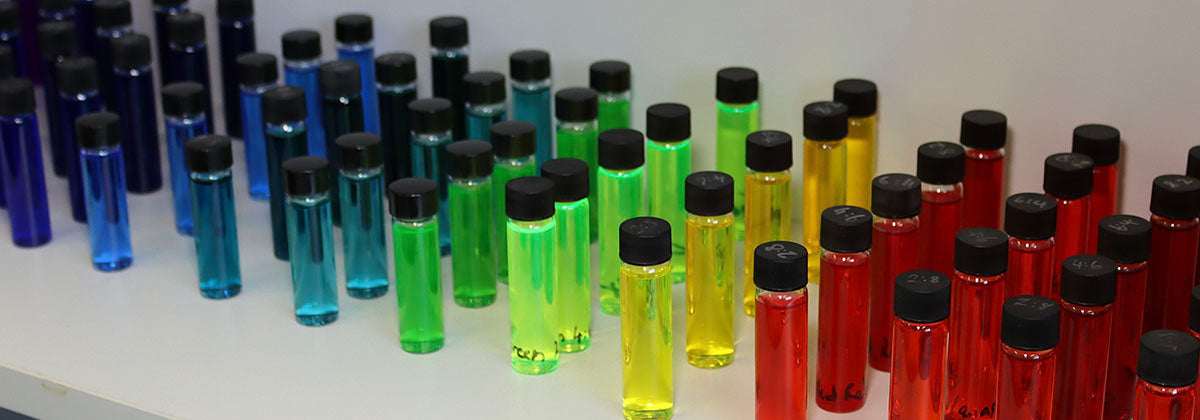
Colour is one of the most important considerations when choosing a coolant. The colour has no performance or functional purpose beyond making your latest PC gaming build look amazing. However, you want the coolant to look the same, even after a year or two in service. Have you ever wondered how colour intensity is measured? The answer is spectrophotometry. In this blog post, we'll take a quick and easy look at spectrophotometry and how Go Chiller uses it as part of an extensive quality control program.
How Does Spectrophotometry Work?
White or visible light is composed of all colours and has many different wavelengths. Spectrophotometry is the study of the interaction between light and matter. In particular, it measures light intensity as a function of its wavelength. A spectrophotometer measures this intensity at each wavelength.
The light from the monochromator passes through a sample, and the light absorption of the sample is measured. The absorbance of the sample is then plotted as a function of wavelength to produce a spectral absorption curve. Light of any wavelength that is not strongly absorbed is transmitted. For example, a green-coloured coolant will absorb blue and red light and transmit green. Go Chiller measures the absorption spectrum for every colour and batch of PC coolant so we can track any degradation of the dyes used over time.
What is the dye's lightfastness?
Like every chemical substance, dyes are subjected to deterioration and oxidation processes over time when exposed to light, humidity and impurities leading to discolouration or fading. The colourants' durability and resistance strengths to discolouration or fading under sunlight exposure are known as lightfastness.
Values of lightfastness are ranked according to fading grades under light exposure using an ASTM Scale from 1 being very poor, lasting a couple of weeks with extensive fading, to 5 being outstanding lightfastness, remaining over two years with limited disappearances.
How does Go Chiller determine dye stability in Astro D-series cooling solutions?
There are many different experimental methods to assess dyes' fastness. Unfortunately, results can be inaccurate for in-computer tests depending on seasons, weather, light intensities, positions (under direct light exposure, away from the window, UV lights, etc.), temperatures, geographic positions, etc.
To minimise these variables, Go Chiller performs accelerated long-term colour stability at operative conditions immersing samples of coolant and exposing them under a constant source of strong LED lights with 1000 W power simulating sunlight effects for two years. As reported in the graph below, absorbance values were monitored using a UV spectrometer in a wavelength range from 300 to 800 nm.
A similar pattern shows comparable results between the original green solution and the aging one with no considerable fading. Go Chiller uses the same experimental conditions for every dye, confirming the stabilities at computer gaming conditions for the selected colourants.

Go Chiller carefully selects our dyes to meet the following specification:
- Non-dangerous and non-toxic substances are present so the coolant is safer for you
- Chemically-compatible with your cooling loop to avoid any unnecessary potential for corrosion in your gaming PC
- Stable at required operative conditions (temperatures, uv-lights, pH, pressure, etc.)
- Long lasting (colour light fastness) so less need to replace the coolant due to fading
- Non staining colours so if you choose a new coolant for a new look, you won’t need to replace tubing or waterblocks.
